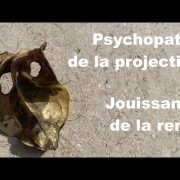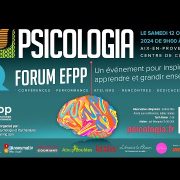Martin Seligman is a renowned American psychologist and writer. He was born on August 12, 1924, in Albany, United States. He’s a professor at the University of Pennsylvania and is one of the most important figures in the world of positive psychology. In fact, his theories of learned helplessness and well-being have become iconic.
Seligman has had an outstanding career. He was president of the American Psychiatric Association (APA) and editor of its famous online journal, Prevention and Treatment. These achievements led to his consolidation as a psychologist and author of several books. Indeed, he’s been catapulted to fame as an important psychological theorist on the subject and a great researcher.
The studies conducted by Dr. Martin Seligman and his positive psychology focus mainly on the approaches to depression. He proposes that we’re capable of using more intelligent strategies in the face of this disorder.
His contributions to the treatment of depression
In fact, Martin Seligman has made many contributions regarding depression caused by negative thoughts. His work follows along the same line of the studies of Professor Aron T. Beck, who was also noted for his contributions to depression treatments. It’s also related to cognitive therapy concerning the problems of perception of reality and loss of control in the face of negative experiences.
It should be remembered that positive psychology dedicates a good part of its efforts to identifying the factors or variables that make certain individuals extremely mentally resistant when faced with difficulty. One of those factors is inertia when it comes to thinking. In effect, we often position ourselves in front of the problems in the imaginary plane that we build and in which we situate them.
Habits of thought don’t have to persist forever. One of the most significant findings in psychology in the last twenty years has been that individuals choose their way of thinking.
-Martin Seligman-
Learned helplessness theory
Martin Seligman’s theory has raised the possibility of increasing well-being and reducing depression in patients. It postulates the provision of wonderful tools to solve problems and modify the perception of the world in those who are depressed. Likewise, his study on happiness has contributed to finding ways to strengthen certain virtues and abilities.
One of the central concepts in the work of Martin Seligman is that of learned helplessness. It’s related to the absence of activity or lack of response to situations that threaten the individual. In fact, it becomes a source of depression for many people. It occurs when someone experiences a situation and simply lets the results happen, without acting in any way. This occurs in a framework where there are automatic negative thoughts that prevent action.
Based on these reflections, in 2002, Martin Seligman created the theory of authentic happiness in people. He subsequently advanced experimental studies that later became his theory of well-being and the PERMA Model. These focus on how positive emotions and relationships, along with personal commitment, lead to goal achievement and emotional balance.
Seligman also raised the point of counteracting the negative thoughts of human beings as an antidepressant mechanism, highlighting the emotions of happiness and optimism. In order not to fall into depression, the situations that happen to us must be rationalized or explained, in a positive and not a negative way. This implies a perspective of enjoyment and hope.
Unlearn against learned helplessness
The management of our interpersonal relationships is directly associated with our mental health, more particularly with self-esteem and the problem-solving strategies we tend to use. In this sense, learned helplessness (absence of hope) prevents us from mobilizing our resources to try to get out of a complicated situation.
In other words, it makes us give up. It’s a position that, in many cases, leads directly to depression. Thus, it’s capable of greatly influencing our way of acting, thinking, and feeling.
In many cases, anxiety and depression appear when we’re unable to find solutions to problems. The lack of initiative when facing a difficulty or the delegation of all responsibility are two of the correlates of this learned helplessness. Seligman affirms that a lack of self-efficacy (I can do it ) combined with a low locus of control (achieving it depends on me) can be unlearned as a vital attitude.
Dealing with learned helplessness
Difficult situations at work, school, or in the social or family environment can generate a feeling of helplessness in someone, at the same time that they feel attacked or violated. When this happens, it’s not enough to tell someone who’s in such a situation what to do. They need to see that they retain the ability to positively influence what happens.
Imagine, for example, an injured athlete. They may need to stop running for a while to recover. While they’re unable to practice running, they can use other methods to improve. For example, they can go to a physiotherapist to speed up their recovery, work on muscle chains that haven’t been affected by the injury, or take care of their diet to avoid gaining weight.
On the other hand, an athlete who’s fallen prey to learned helplessness will feel that the only thing they can do is let time pass until their injury heals. This attitude will not only frustrate them and undermine their sense of control, but will also mean they’re unable to regain their form until they’ve recovered from their injury.
Feelings and emotions, such as love or courage, bravery, persistence, and social intelligence can be learned. It helps to restructure negative thoughts. In turn, it leads to getting ahead in situations that test our mental strength.

Well-being theory or PERMA Model
Another of Martin Seligman’s great contributions to psychology is the PERMA Model. It describes the free choice of people to increase their well-being. Therefore, it includes the bases and indicators to feel good, be positive, and maintain that attitude and feeling for as long as possible in daily life.
In Seligman’s 2002 book, Authentic Happiness, he claimed that happiness consisted of positive emotion, engagement, and meaning. He later changed his object of study from happiness to well-being.
The PERMA model
Seligman’s PERMA model is based on an acronym that represents the five main elements of well-being:
- P (positive emotions). It means increasing the number of positive emotions (gratitude, hope, love, curiosity, etc.). However, this shouldn’t be at the cost of exchanging or transposing them with the negative ones (fear, sadness, anger, etc.) but rather as a tool to deal with them.
- E (engagement). Making a commitment to ourselves and our strengths, in order to place ourselves in a state of harmony, affinity, and flow of consciousness. In other words, our commitment to the search for the kinds of activities that allow us to enter optimal states of activation. For example, when you’re so immersed in a project or task that time seems to stop. That’s because you’re only concentrating on what you’re doing right now.
- R (relationships). Fostering healthy and positive relationships is an essential factor in achieving well-being.
- M (meaning and purpose). This factor refers to the search for meaning and purpose in our lives and implies belonging to something bigger than ourselves. In this way, each objective, goal, and purpose we achieve underlies a relevant meaning. This imbues them with transcendental meanings.
- A (accomplishment) It supposes success and a sense of achievement. Therefore, it implies the establishment of goals, which, once achieved, will make us feel competent and autonomous.
Well-being
For Seligman, if we manage to cover all the above factors, we can achieve sustainable and complete well-being. However, he further clarifies that we shouldn’t try to promote each and every one of the factors of the PERMA model equally, not even in a forced or imposed way. Instead, we must try to promote those with which we identify and feel most comfortable, without the need to jeopardize our own well-being.
Positive emotions and motivation for acting in difficult situations
As you can see, Martin Seligman’s approach is aimed at working emotions in a positive way. This nourishes and highlights the good things in every human being. Doing so considerably increases an individual’s confidence and self-esteem.
The objective is to ensure that individuals manage to deploy their capacities in conflictive situations. It seeks to favor the positive resolution of difficulties and motivate effective actions in specific situations. In effect, to unlearn the behavior of letting things go or repressing them.

Finally, Seligman’s concept of well-being encompasses happiness and optimism. Both can be found through positive emotions, commitment to activities, positive relationships with the environment, and forging personal purposes and achievements. At the end of the day, they prevent us from falling prey to depression and having an enjoyable life.
The post Martin Seligman And His Theories appeared first on Exploring your mind.



















Comments